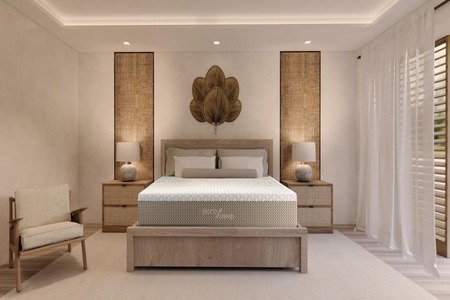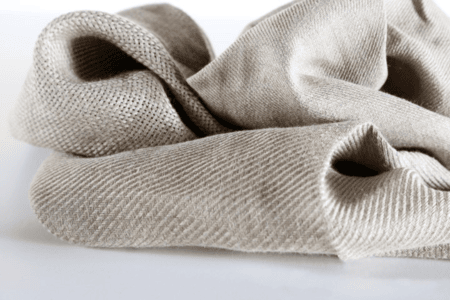
Women in fashion still face a pay gap problem
YarnsandFibers News Bureau 2019-04-09 17:00:00 – United KingdomData published this week in the UK revealed a stubborn gap between what men and women earn at fashion brands and retailers, with Farfetch, Missguided, Karen Millen and Asos among the companies reporting large disparities favouring male employees.
For the second year in a row, large UK businesses provided a snapshot of the difference between what they pay their male and female employees. And, much like in the first report, the numbers from the fashion industry told a familiar story: brands employ a disproportionate number of women, but pay them less — sometimes far less — than their male co-workers.
Among the biggest disparities: fast-fashion retailer Missguided reported a 46 percent median average gap favouring men, while Farfetch reported a 39.5 percent gap, Asos a 32.7 percent gap and MatchesFashion a 31 percent gap. The average UK company reported a 9.7 percent difference, unchanged from the previous year, according to BBC News.
The snapshot was taken in April 2018, roughly six months into the “#MeToo era,†when ill-treatment of women in the workplace was thrust into the spotlight in the wake of assault allegations against Harvey Weinstein and other high-profile men. Though initially focused on sexual harassment and assault, activists have pressured companies to address other issues, from providing parental leave and childcare to promoting more women into management positions.
The most important thing that the gender pay gap reporting did was focus people and organizations on the need, in a way that resonated.
The UK requires companies with over 250 employees to report annually on the difference in the hourly wage earned by all men and women in the workplace, the proportion of men and women among the lowest and highest earners as well as the disparity in bonus pay. The data highlights the overall gap in pay, but not necessarily whether women and men are earning different salaries for doing the same job.
“The most important thing that the gender pay gap reporting did was focus people and organizations on the need, in a way that resonated,†said Maxine Benson, co-founder of Everywoman, an organization championing the advancement of women in business.
In fashion, average pay reflects the roles men and women hold at many companies. Often large numbers of women are employed in sales positions at stores, often among the lowest-paid positions. For example, Karen Millen reported that men earned a median average of 53 percent more than women, though the company’s executive ranks are also dominated by women.
“Our gender pay gap ... paints a misleading picture about our commitment to gender diversity and equality at Karen Millen,†chief executive Beth Butterwick said in a statement posted to the company’s website. “Our pay gap is highly influenced by the salaries and gender make-up of the stylists who work in our stores. … However, we recognise we can do more to champion diversity at all levels of our business and ensure everyone can build and sustain a successful and rewarding career.â€
More often, companies showed an overwhelmingly female workforce occupying the lowest rungs of the pay scale, and more men at the top. Missguided said this factor “largely drives our gender pay gap.â€
This is about long-term systemic change. You’re not going to eliminate gender pay gaps overnight.
Tech-focused retailers face an already slender female hiring pool thanks to a lack of women following a tech career path. With that in mind, it’s not that surprising to see Missguided, Farfetch, Asos and MatchesFashion’s higher ranking positions. Indeed, Asos cites a lack of female tech talent as one of the reasons it's lagging behind its peers.
Flexible working hours that women with young children will often take advantage of will also affect statistics. Plus, reported earnings are only applicable to employees based in the UK. In today’s global world, often companies have a big employee base offshore, or an international headquarters.
A few fashion names saw their gender pay gaps shrink. New Look saw a woman’s earning jump from £0.79 to £0.86 for every £1 a man earned between 2017 and 2018. Similarly, female employees at Russell & Bromley went from earning £0.88 for every £1 a man earned in 2017 to £0.94 for every £1 a man earned in 2018.
For some brands, including Burberry, Mulberry, Selfridges and Topshop-owner Arcadia there was little to no fluctuation, with these companies reporting median pay gaps of 8.7 percent, 4.8 percent, 7.7 percent and 7.7 percent respectively, all in favor of men.
Primark, All Saints, Boohoo and Debenhams are among the retailers that have no median gender pay gap.
A few had gaps favoring women. At Paul Smith, a woman earned £1.13 for every £1 a man earned; at Harvey Nichols Group she took home £1.12 and at Harrods, she took home £1.02.
Despite a relative lack of movement, pay gap reporting shines a spotlight on the issue, and helps keep companies publicly accountable for gender pay disparities, Everywoman’s Benson said.
“It’s also important to remember that it is a long game,†she said. “This is about long-term systemic change. You’re not going to eliminate gender pay gaps overnight.â€
Courtesy: Business of Fashion
Market Intelligence
Ask for free sample Report

experience
Customer Base
dedicated team
Countries Served Worldwide









